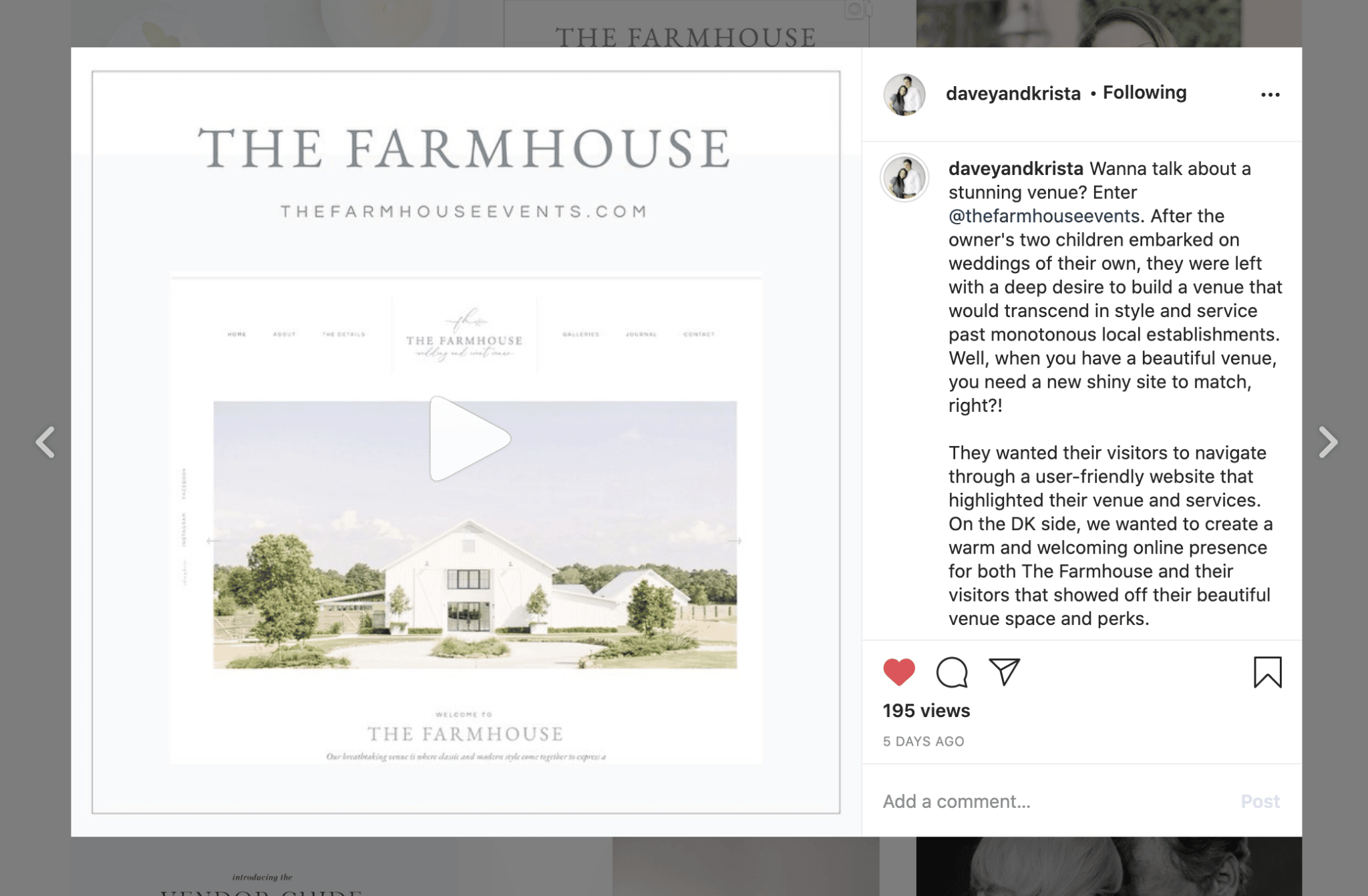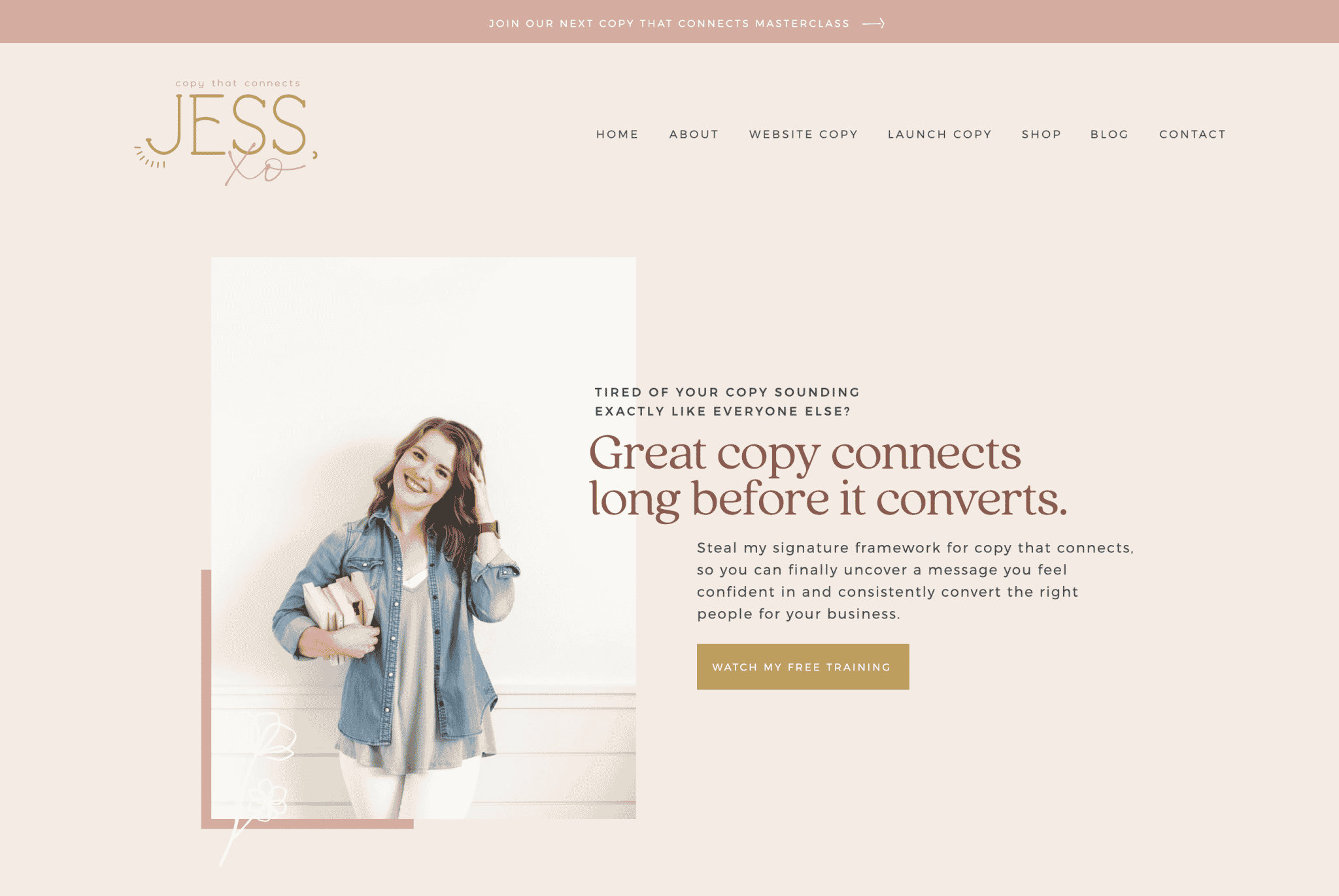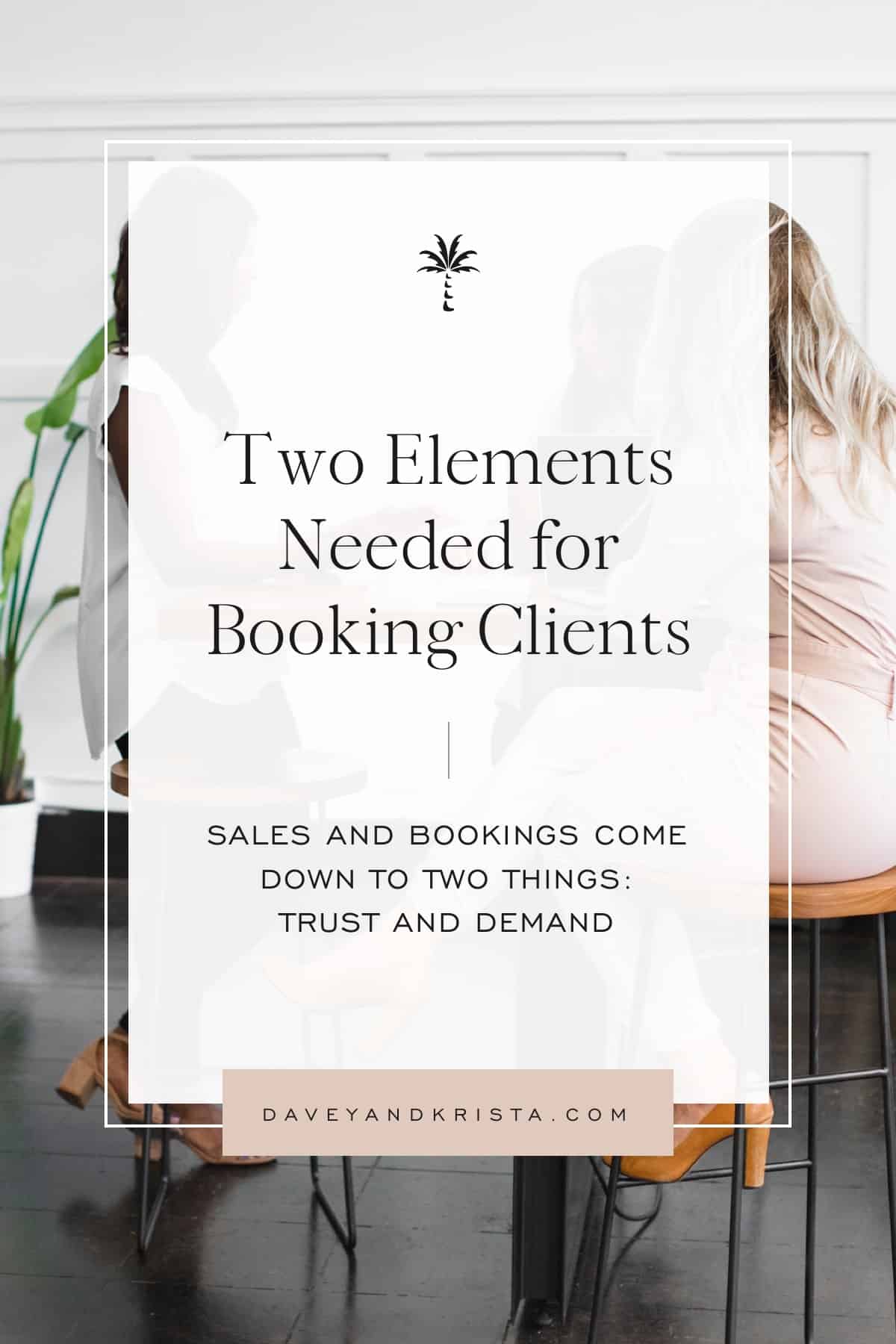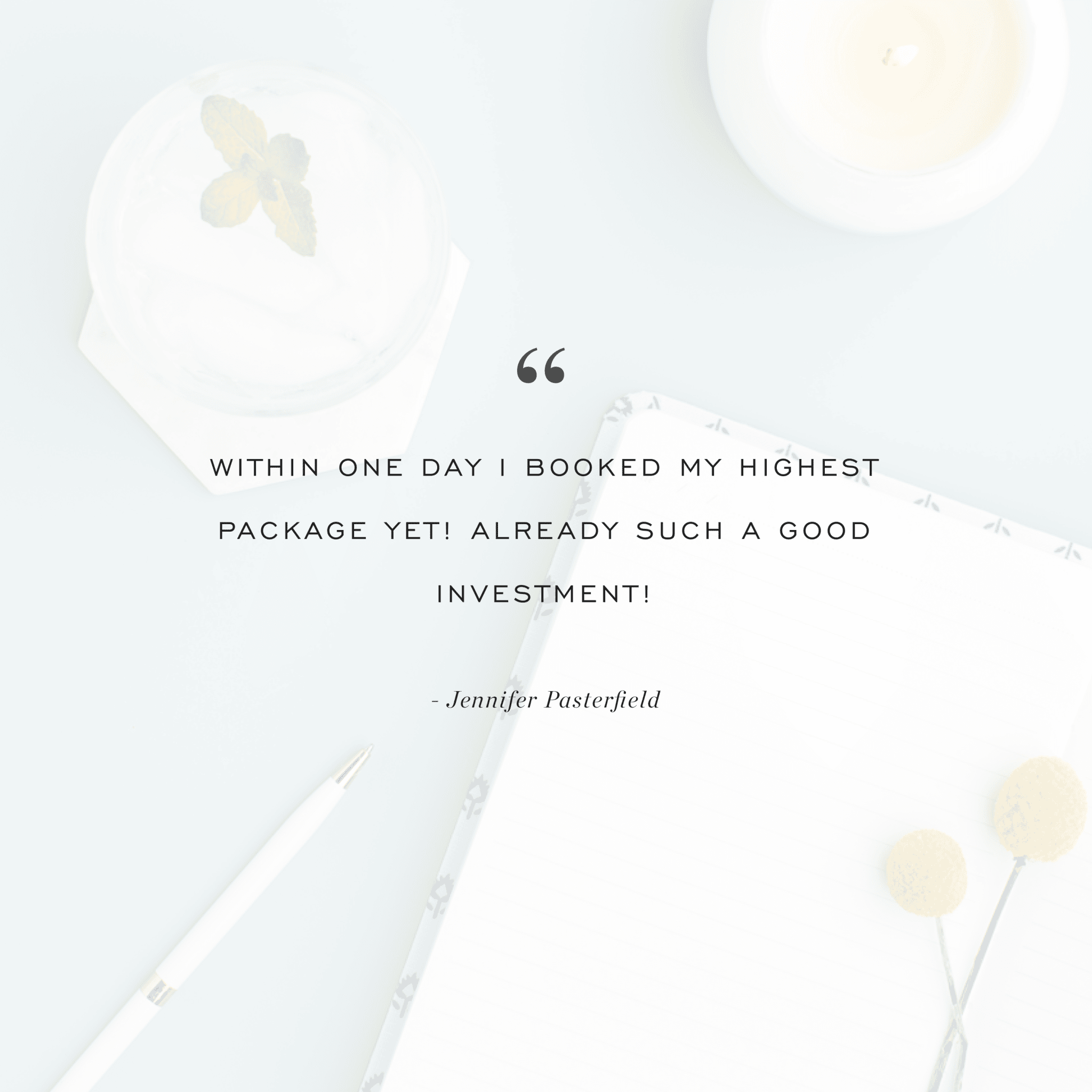There is really only one question you need to answer when selling your product or service:
Are you really able to do that for someone like me? [that = whatever benefit your product or service promises]
Sales and bookings come down to two things: trust and demand.
People book us when they trust that we or our products can get the best results for them. It’s more than whether we can get results—they want to know whether our product or service will work for them. “I know that works for some people, but I’m just not sure it will work for me…” is many people’s default objection.
And, of course, we need to get a prospect to the point where they feel like they need our service or product to begin with. We need to build demand with our audience. And not just demand for a solution, but demand for our solution.
Fortunately, we can directly influence each of these elements.
Related: How to Fix a Booking Problem
How to Build Trust with Prospects and Leads
The amount of trust that we need to build with a potential customer will vary from business to business. Typically the cheaper the product, the less trust that needs to be built for someone to purchase—at least for the first time.
For instance, if I’m ordering inexpensive household items—like paper towels—from Amazon, I’ll generally filter results by Average Reviews and choose based on the item with the best aggregate review score and the best price. Since it’s inexpensive, I generally won’t even read the individual reviews.
Trust was still an important factor—I still looked at the average amount of stars the product received even though it was an inexpensive product. But, I didn’t do any further digging because I know that if it ends up being a bad purchase, I’ll just get something better the next time around.
How does trust influence a bigger purchase?
Let’s say I was building a house and needed to hire a homebuilder. The investment would likely be hundreds of thousands of dollars, and it’s not something I can just “do over” if it doesn’t turn out how I like. In this instance, I’m probably asking friends and family for recommendations, carefully reading reviews on every candidate, looking at their past work, and conducting some sort of interview before signing a contract.
The point: In both cases, trust was an important aspect of the purchasing decision.
Trust is such a crucial part of the purchasing decision that it can keep a potential customer from researching alternatives. For instance, if I’ve seen firsthand the great work a business did for a friend, I might reach out only to that business instead of taking a chance on another business whose work I haven’t seen (even if I know or think there are less expensive alternatives out there).
Here are three ways to start building trust with prospects and leads…
1) Make ambassadors out of your current clients.
When someone inquires after chatting with a happy past customer, much of the selling has already been done. The easiest way to make ambassadors out of your current clients is to do great work, and then make it easy to share about you.
Making it easy to share about your business is key. This doesn’t just mean that people know your website URL or IG handle, but that people also know exactly what to say about your business. Think about some of your favorite brands? I bet you could repeat their tagline or value proposition statement verbatim, and easily explain why they’re the best option of their competitors.
“Debt is dumb, cash is king, and the paid off home mortgage has taken the place of the BMW as the status symbol of choice.” … bonus points if you know who that is!
Can people do the same for you?
It might even make sense for some businesses to create formal referral or affiliate programs that reward people who send business their way. Even if you don’t have a formal program, you should always reward people that send you business—even if it’s just a handwritten ‘thank you’ note.
2) Show up consistently and show off the results that you get for your clients.
Consistency builds trust. Showing up over and over again demonstrating that you can consistently get results for your clients will help you build trust with potential clients.
Where do you show up? Wherever potential clients are hanging out. This likely means social channels like Facebook and Instagram, but it also might include networking events and publications your community read.
Businesses have an opportunity to educate whenever they’re able to share the work they’ve done for a client. What made this project successful? Why were certain decisions made? What’s interesting about this project that might not be immediately apparent? Those are the types of questions that, when answered, both educate prospects and build trust.
3) Do the ordinary things extraordinarily.
Think about the people you trust most in your life. My guess is that the reason you trust them is simple: They do what they say they’re going to do—even in the ‘small’ things.
Doing the ‘ordinary’ things in business is just as important as doing the extraordinary work you provide for a client. This means communicating clearly and professionally, responding to people’s inquiries and questions, and engaging people on social channels.
Every interaction with a potential client is an opportunity. Each might be too small to lead to a booking on its own, but can make the difference when added together. Businesses that provide a stellar service but poor customer support open themselves up to competition.
How to Build “Demand” with Prospects and Leads
So what do we mean by demand? Basically how can we convince a prospect that…
- their life would greatly improved by using our product or service
- that our product or service is the best option for them out of all the alternatives.
So how do we establish those two things?
Benefits.
Typically the business that can communicate the most compelling benefits will win a person’s business.

Benefits are different from features. Benefits convey how something is going to improve one’s life in one of these categories: health, wealth, or reputation. Features cover the specs of the product or service. The former is ultimately about your customer or client, while the latter is about your product or service.
It’s easy to see why one is more compelling than the other. I don’t care so much about the features of a drill, but I do care that it’s easy to use for someone who isn’t particularly good with tools.
Benefits should speak specifically to one of the aforementioned categories: health, wealth, or reputation. Those categories sum up what people are typically most concerned with in life. Here are a few ways to build desire for your product or service by being benefit driven:
1) Education around your services.
Why does your approach work? How can people get the very most out of your product or service?
Try communicating the answers to these questions by focusing on your product or service works (maybe by contrasting it with other approaches that don’t) without getting too scientific or technical for your audience.
All of this can be done in content you’re already creating. For instance, a family photographer might post a cute picture of a family only to say that the kids were not into the photos, but because of her expertise, she was still able to do great work.
A business might not only use an online quiz to match potential customers to the right product, but to also share a little more information about their products and company.
As an aside, this is something that should continue after someone purchases your product or service. It can be one of the best ways to improve a client’s experience, and I write more about that in this blog post.
2) Create urgency.
Urgency is important in the purchasing process. Basically, why should someone purchase now instead of later?
Some obvious ways to create urgency that come to mind are countdown timers and limited time offers. Beyond discounting products and services, you can also create urgency by bundling services or products that don’t usually come together. Basically you’re adding a ‘bonus’ to your collection that people can take advantage of for a limited time.
While tactics like these are effective, they might not be appropriate for every business. Fortunately, there are ways to create urgency that don’t require timers and sales.
Good copywriting, for instance, should create urgency by clearly communicating how much better life will be after using your product or service. Health industry products typically do a very effective job of articulating the current problem someone is facing (weight loss, back pain, etc.), and how such-and-such product can solve that problem.
3) Show off the transformation your product or service offers.
This is one of the most powerful ways to build desire for your product or service (and build trust): Show off real people who have been ‘transformed’ by your product or service.
The health industry (again) does a good job of this. Just think about how many ‘before and after’ pictures you typically see whenever you land on a sales page for a nutritional supplement or exercise program. But the health industry isn’t the only industry that should be doing this.
Sure, ‘transformation’ might sound a bit hyperbolic. But every business should point to examples of people that have benefited from using their product or service even if it doesn’t come in the form of a ‘before and after.’ Pro tip: try getting testimonials from people that overcome common objections and point to the benefits of your product or service.
Trust + Demand = Sales
While we can talk individually about ‘building trust’ and ‘creating demand,’ these aren’t things that we do individually on a practical level. If we’re marketing our business effectively, nearly everything we do should be building trust and creating demand.
Building trust and creating demand really come down to two elements: social proof + content.
Social proof helps prove to people that you’ve helped real people just like them. Outside of someone actually experiencing your product or service, a referral from a real person is the fastest way to build trust with someone.
We can ‘manufacture’ a little bit of that experience by sharing testimonials and case studies, and showing off work we’ve completed for real clients. In other words, we’re creating content around the clients we’ve worked with. When sharing work it’s important to include context about the project: What problem did you solve? How did you help that person achieve their goals? What challenges did you overcome? Etc.
Additional content created around common misconceptions, objections, and how to get the best results is an effective way to educate people about the service or product you provide while demonstrating how knowledgeable you are (thus building trust).
Something we talk about as a team here at ‘Davey & Krista’ is that we want most of the sales work to be done before we ever have to get on the phone with someone. We’ve found that building trust through interactions and the content we produce is the one of the best ways to achieve that.
So, how can you make sure you’ve built trust before a prospect needs to make a purchasing decision? Let us know in the comments!
Save it for later…


VIEW THE COMMENTS
Add A Comment